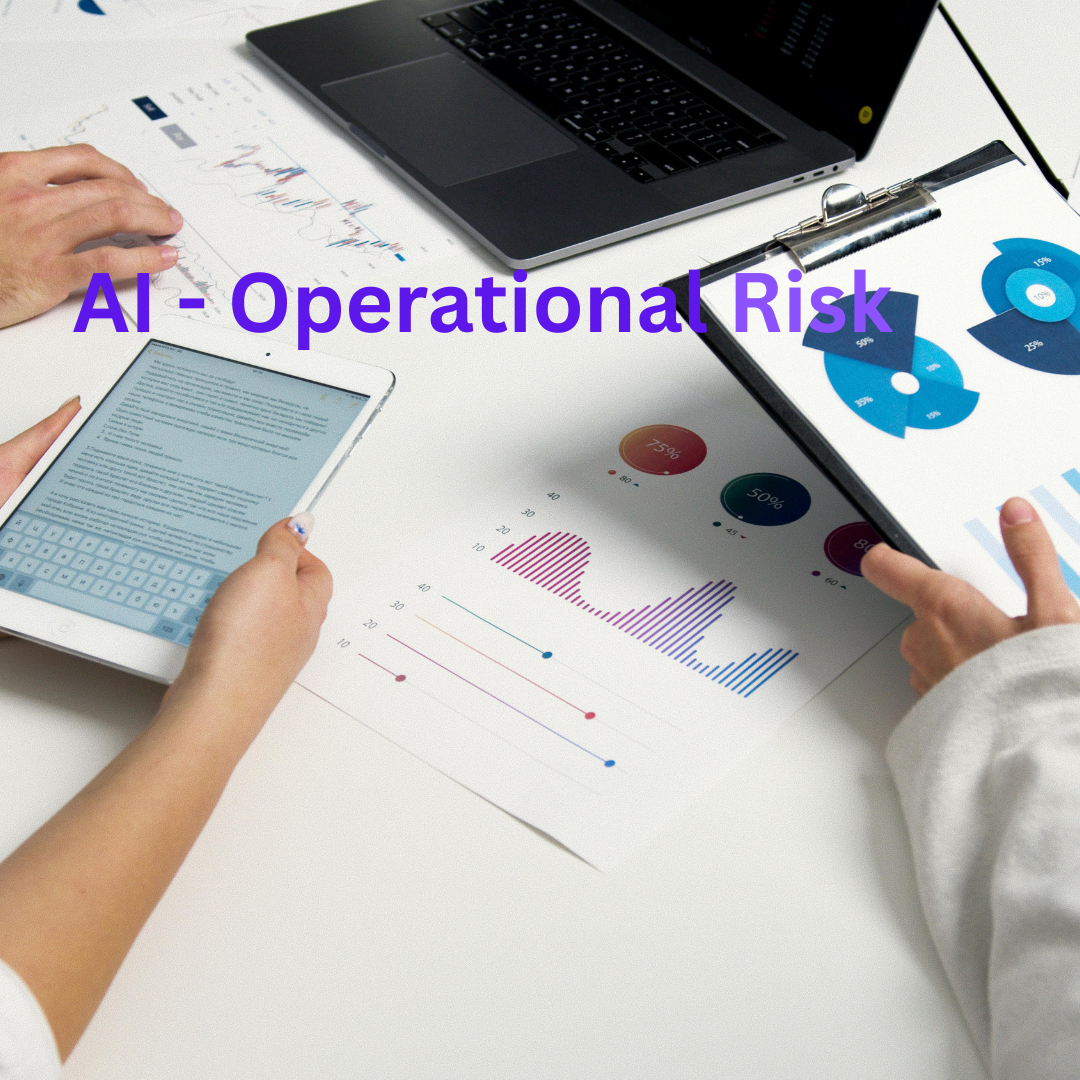Establishing comprehensive metrics and key performance indicators (KPIs) is essential to measure the true value of artificial intelligence (AI) in operational risk management. With the right metrics in place, organizations can track performance, identify improvement areas, demonstrate financial value, ensure regulatory alignment, and promote organizational learning for continuous enhancement.
Operational Performance Metrics
Model Performance KPIs
Effective operational risk management through AI hinges on continuous monitoring and refinement of model performance:
- Accuracy Metrics:
- Precision Rate: Proportion of identified risks that are actual risks, minimizing false positives. Learn more about precision and recall
- Recall Rate: Proportion of actual risks that the system successfully detects, reducing false negatives.
- F1 Score: Harmonic mean of precision and recall, providing a balanced measurement.
- AUC-ROC: Evaluates the model’s discrimination capability across risk thresholds. What is ROC-AUC?
- Operational Efficiency Metrics:
- Processing Speed: Time to analyze transactions or risk scenarios.
- Throughput Capacity: Number of risk assessments processed per period.
- System Uptime: Percentage availability of risk management systems.
- Response Time: Time taken from risk alert generation to stakeholder notification.
Risk Detection Effectiveness
Organizations must track the real-world risk impact delivered by AI models:
- Detection Performance:
- True Positive Rate: Fraction of actual risks correctly identified.
- False Positive Rate: Fraction of flagged items that aren’t risks.
- Risk Coverage: Percent of the risk universe under AI surveillance.
- Early Detection Rate: Share of risks flagged before materializing.
- Risk Mitigation Impact:
- Loss Prevention: Financial value of risks prevented using AI.
- Incident Reduction: Drop in risk events post-AI implementation.
- Time to Resolution: Duration from alert to risk mitigation.
- Escalation Rate: Portion of AI-flagged risks requiring human intervention.
Financial Impact Measurement
Cost Reduction Metrics
AI-driven risk management must show tangible economic value:
- Direct Cost Savings:
- Manual Processing Reduction: Lower human resource hours for risk assessment.
- False Positive Elimination: Savings from fewer unnecessary investigations.
- Automated Reporting: Cost reduction via automated regulatory and internal reports.
- Infrastructure Optimization: Efficiency gains from IT resource streamlining.
- Compliance Cost Management:
- Regulatory Fine Avoidance: Value from avoiding penalties due to improved compliance.
- Audit Efficiency: Lower internal and external audit expenses.
- Documentation Automation: Savings from automated compliance documentation.
- Training Cost Reduction: Savings via AI-assisted or reduced training needs.
Revenue and Growth Impact
AI not only reduces costs but also supports organizational growth:
- Revenue Protection:
- Business Continuity: Preservation of revenue through operational risk prevention.
- Customer Retention: Higher revenue via improved fraud prevention and customer experience.
- Market Expansion: Growth enabled by confident risk management in new domains.
- Competitive Advantage: Market share gains through risk intelligence.
- Growth Enablement:
- Risk Capacity Increase: Greater business volume within risk appetite.
- Product Innovation: Launch of new offerings via better risk insights.
- Market Entry: Expansion into new geographies or sectors.
- Partnership Opportunities: Enhanced appeal to partners through demonstrated risk capability.
Compliance and Governance KPIs
Regulatory Compliance Metrics
Track how well AI systems are aligned with legal and regulatory expectations:
- Compliance Performance:
- Policy Violation Rate: Number of compliance breaches; target is zero tolerance.
- Regulatory Reporting Timeliness: Percentage of on-time report submissions.
- Audit Finding Resolution: Average time to remediate audit findings.
- Data Privacy Compliance: Number of data privacy issues or breaches.
- AI Governance Metrics:
- Model Bias Detection: Frequency and seriousness of detected biases.
- Explainability Score: Degree of interpretability and transparency of models.
- Human Oversight Rate: Portion of decisions reviewed by humans.
- Model Update Frequency: Regularity of model refreshes and retraining.
Risk Management Framework Effectiveness
Evaluate the impact of AI systemically on organizational risk mitigation:
- Framework Performance:
- Risk Identification Coverage: Percent of total organizational risk identified by AI.
- Risk Assessment Accuracy: Alignment between AI predictions and real-world outcomes.
- Control Effectiveness: How often AI-initiated controls successfully prevent incidents.
- Incident Response Time: Time from detection to mitigation of risk events.
- Continuous Improvement:
- Model Learning Rate: Speed at which models adapt to new risk patterns.
- Feedback Integration: Percentage of user and stakeholder feedback used for improvements.
- Innovation Pipeline: Number of new AI risk initiatives in development.
- Knowledge Transfer: Efficacy of AI-generated insights for better decision-making.
Benchmarking and Comparative Analysis
Industry Benchmarking
Comparative benchmarking ensures your AI is competitive and effective:
- Performance Benchmarks:
- Fraud Detection Rates: Compare your rates against industry averages.
- False Positive Rates: Benchmark reductions versus best practices.
- Processing Efficiency: Assess speed versus other organizations.
- Cost Efficiency: Evaluate costs and ROI relative to industry norms.
- Maturity Assessment:
- AI Adoption Level: Your organization’s standing versus peers.
- Technology Integration: Depth of AI integration in your processes.
- Governance Sophistication: Quality of AI risk governance frameworks.
- Innovation Leadership: Your pipeline of new AI capabilities compared to competitors.
Continuous Monitoring Framework
Robust, ongoing monitoring systems ensure KPIs drive improvement:
- Real-Time Monitoring:
- Dashboard Development: Executive dashboards for KPI visibility.
- Alert Systems: Automated notifications for threshold breaches.
- Trend Analysis: Spot improvement or deterioration over time.
- Predictive Analytics: Use AI to project future KPI outcomes and risk exposures.
- Periodic Reviews:
- Monthly Reviews: Routine operational and metric assessments.
- Quarterly Business Reviews: In-depth look at business impact.
- Annual Strategic Assessment: Long-term strategic review of performance.
- Regulatory Reporting: Periodic reports for regulators and key internal stakeholders.
Comprehensive metrics and KPIs are the backbone of effective, transparent, and value-driven AI operational risk management. By focusing on performance, financial impact, compliance, and continuous benchmarking, organizations can ensure their AI investments not only meet but exceed expectations—turning risk data into actionable insight and competitive advantage.
Frequently Asked Questions (FAQ)
Why are KPIs important in AI-driven operational risk management?
KPIs provide objective data to assess performance, drive improvements, and demonstrate ROI. They help ensure that AI delivers actual business value and regulatory adherence.
What are the most essential accuracy metrics for AI risk models?
Precision, recall, F1 score, and AUC-ROC are critical. They balance risk detection with minimizing false signals and measure overall reliability. (Machine learning metrics explained)
How can benchmarking help my organization’s AI risk program?
Benchmarking enables comparison against industry best practices, identifies areas for improvement, and sets performance targets that reflect real-world excellence.
How do financial impacts tie into AI risk KPIs?
Financial impact measurement (like operational cost savings, fraud prevention, or regulatory fine avoidance) directly links risk management investment to tangible business benefits.
How should organizations monitor AI model performance long-term?
Automated dashboards, periodic reporting, real-time alerts, and regular reviews ensure ongoing performance, quick adaptation, and transparent communication with stakeholders.



